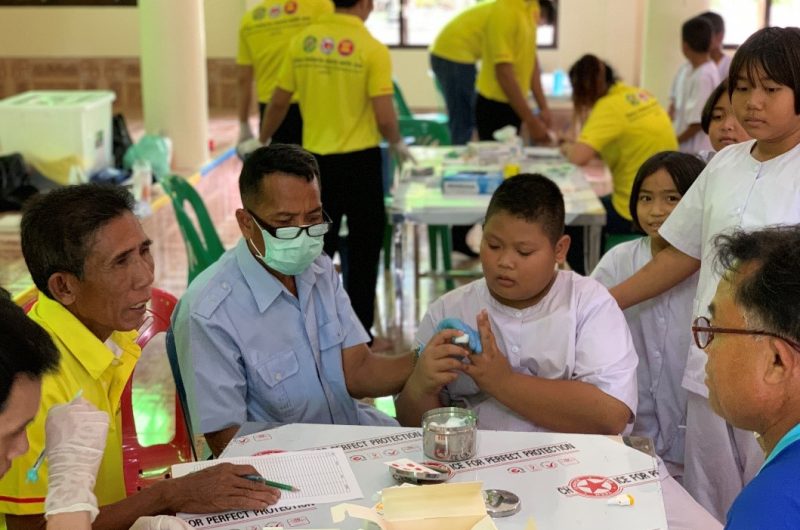New study explains link between community immune responses and transmission intensity of malaria in Thailand
New study explains link between community immune responses and transmission intensity of malaria in Thailand

Malaria is a vector-borne disease transmitted to humans by the infectious bites of female Anopheles mosquitoes. Globally, malaria is the top mosquito-borne disease that causes infection and death. In the WHO Southeast Asia region, approximately 200 million people in nine countries are at high risk of acquiring malaria. In Thailand, although malaria control efforts have been highly effective in decreasing infection in the country, malaria is still endemic, and a common disease, particularly among the most vulnerable group, including those who visit forested areas known as forest-goer.
In a new study published in Frontiers in Cellular and Infection Microbiology, researchers at the Department of Parasitology and Medical Entomology now show that seroepidemiological surveillance of malaria in low transmission settings can be linked to different transmission intensities among forest-goer communities in Thailand. They also demonstrated that a history of malaria exposure could be constructed in the situation of missing baseline data, and predictions can be made in the absence of active transmission
“Our work is the first to report on malaria seroprevalence for two Plasmodium species (Plasmodium falciparum and Plasmodium vivax) and provide insights on risk factors of malaria exposure among forest-goer communities in rural areas of Thailand. Our results showed an apparent heterogeneity of antibody responses for recombinant apical membrane antigen (AMA-1) and recombinant merozoite surface antigen-1 19 (MSP-1 19 ) antigens of both species, with AMA-1 demonstrating a higher prevalence of 4- to 8-folds compared to MSP-1 19 . Furthermore, our results also showed the relationship between
age and seroprevalence rates was similar in all studied areas, increasing with age, peaking at 46–60 years, and then decreasing with age. In addition, seroprevalence and seroconversion rates (SCRs) were higher in the older age group, indicating that the age-specific antibody response reflects cumulative exposure or population behavioural differences”, says Dr Zulkarnain Md Idris, senior lecturer and corresponding author of the study.
The researchers note that continued malaria surveillance, vector control, education, and information campaigns are important not only among the forest-goer community in Thailand but also among other vulnerable communities in the ASEAN region. This study was supported by the ASEAN Science Technology and Innovation Fund (FF- 2019-124) from the ASEAN Secretariat and Geran Pembiayaan Sepadan (FF-2019- 124/1) from the Faculty of Medicine UKM.
Publication
“Seroepidemiological surveillance, community perceptions and associated risk factors of malaria exposure among forest-goers in Northeastern Thailand[ZMI1] ” Mohd Amirul Fitri A. Rahim, Sriwipa Chuangchaiya, Paisit Chanpum, Laun Palawong, Panuwat Kantee, Nor Diyana Dian, Inke Nadia D Lubis, Paul CS Divis, Akira Kaneko, Kevin KA Tetteh and Zulkarnain Md Idris. Frontiers in Cellular and Infection Microbiology, online Aug. 22, 2022, doi:10.3389/fcimb.2022.953585
[ZMI1]Link: https://www.frontiersin.org/articles/10.3389/fcimb.2022.953585/full


